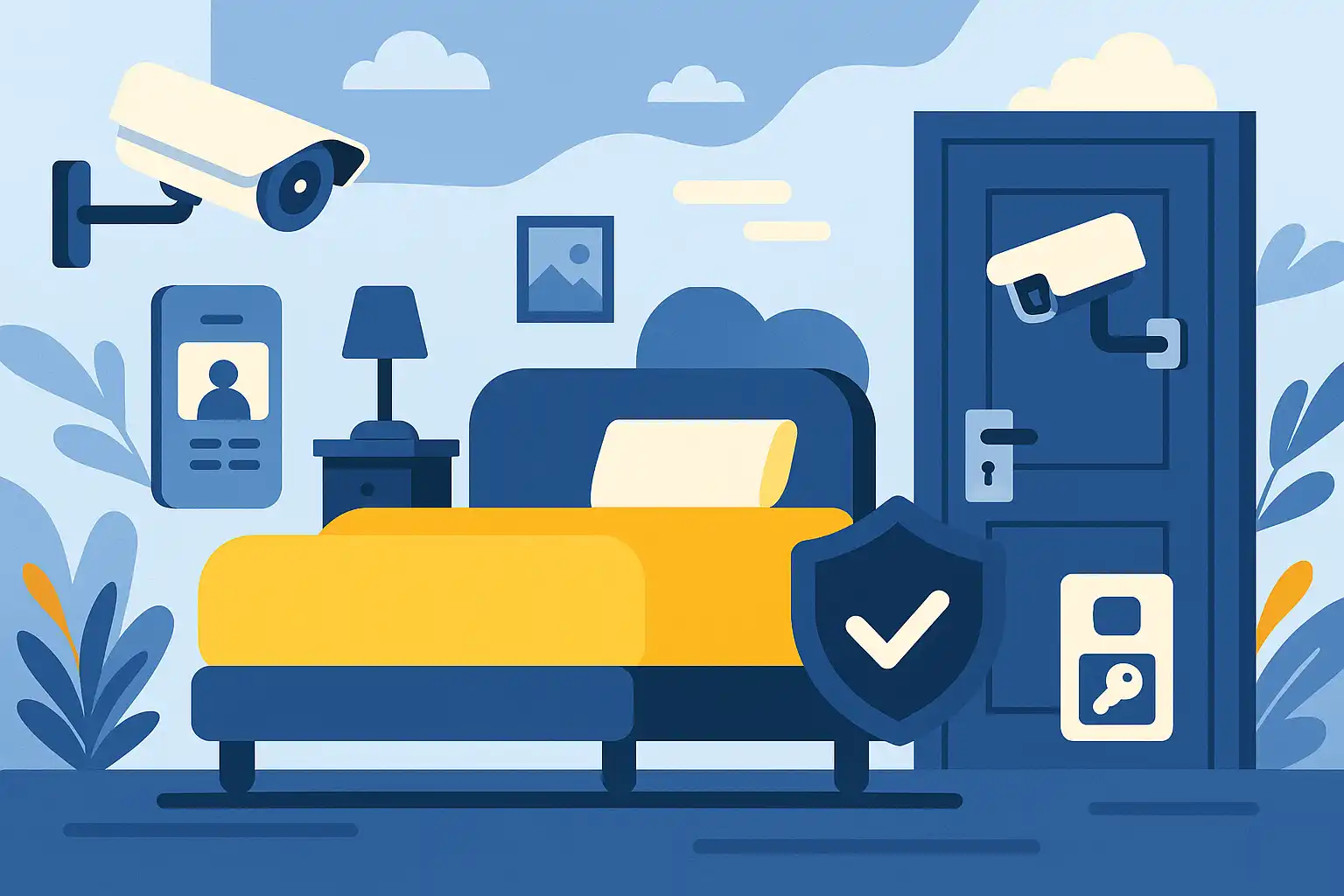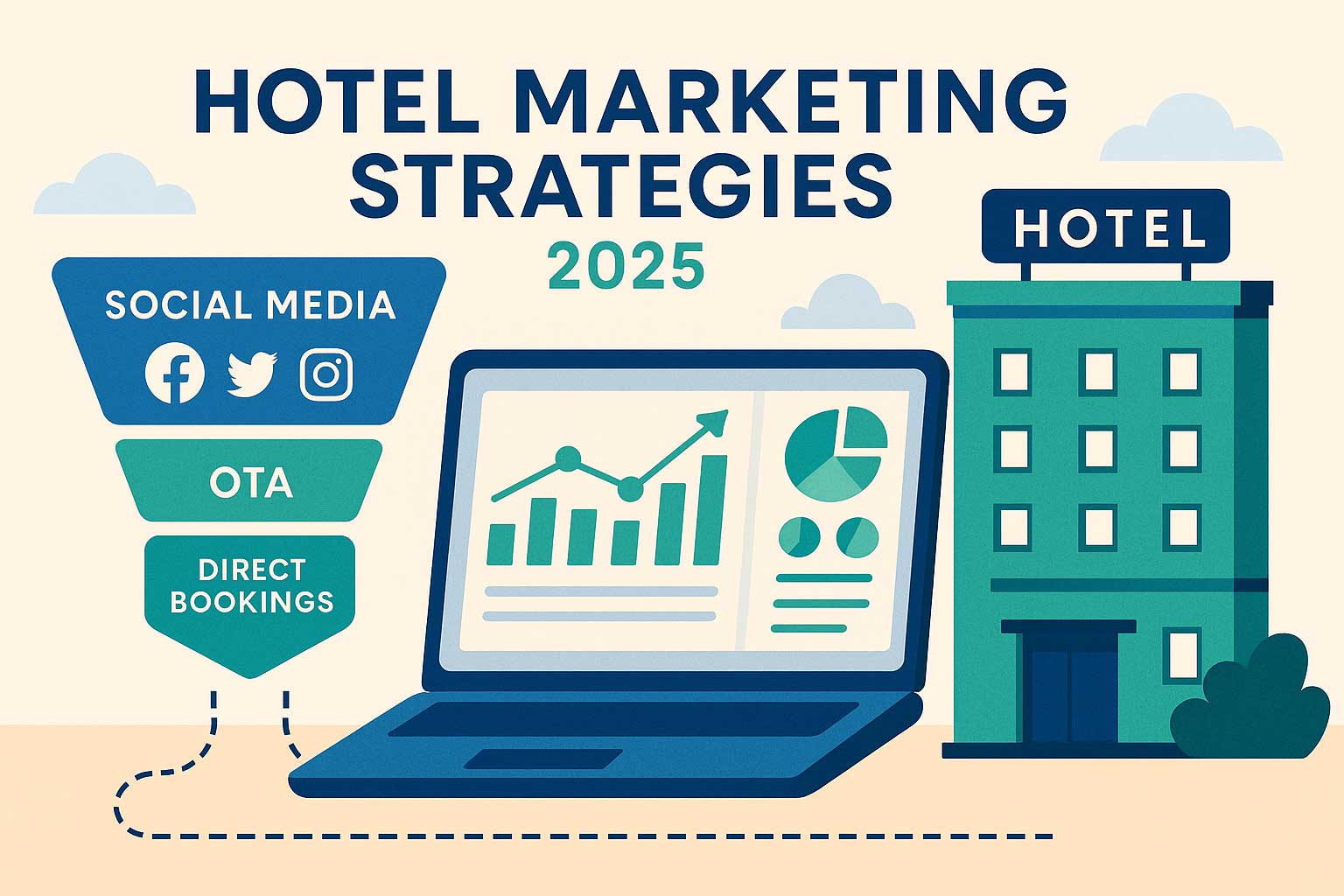GOPPAR: The Ultimate Guide to Gross Operating Profit Per Available Room for Hotels
Aug 6, 2025
 Mika Takahashi
Mika TakahashiPopular Categories
Hotel Technology & InnovationHotel Operations OptimizationDigital MarketingIndustry TrendsRevenue ManagementHospitality Industry
Popular Categories
Trending Post

Hotel Walk Letter Template: Professional Guest Communication

Online Travel Agents: What They Are and How They Work

Hotel Security Systems: Modern Protection Solutions

Hotel Advertising: Complete Guide to Boost Bookings and Revenue

25 Hotel Marketing Strategy Ideas for 2025: Complete Guide

AI Reservation Agent: Revolutionizing Hotel Booking and Guest Experience

PMS Communication: Streamlining Property Management Through Effective Guest Messaging
Table of contents
In today’s fast-paced hospitality world, simply tracking revenue isn’t enough to ensure your hotel’s long-term success. Sure, occupancy rates and room revenue give you useful snapshots, but they don’t tell the whole story. Savvy hotel owners and revenue managers are now turning to a more insightful metric that reveals the true financial health of their properties: GOPPAR.
GOPPAR stands for Gross Operating Profit Per Available Room. It’s a key metric that digs deeper than just revenue by factoring in both how much money your hotel brings in and how much it costs to run. Unlike traditional numbers that only look at the top line, GOPPAR gives you real-time insights into how efficiently your hotel turns revenue into actual profit after covering all those operational expenses.
This guide is your go-to resource for everything about GOPPAR—from the basics of how to calculate it to advanced strategies for boosting your hotel’s profitability. You’ll discover how to accurately figure out your GOPPAR, compare it against industry standards, and apply proven tactics to maximize your property’s financial performance.

What is GOPPAR?
GOPPAR stands for Gross Operating Profit Per Available Room, and it’s a crucial metric that goes way beyond just tracking revenue. While many hotel performance indicators celebrate filling rooms or generating revenue, GOPPAR tells you how much profit your hotel actually makes per available room after accounting for all operating expenses.
This represents a big shift in how the hotel industry measures success. Instead of just cheering for high occupancy or impressive room rates, GOPPAR encourages hotel operators to look at the full financial picture. It answers a vital question: “After paying all our operational costs, how much profit are we really making from each available room?”
Unlike RevPAR, which focuses solely on revenue, GOPPAR gives you the complete story by including operational costs like labor, utilities, and other expenses. This makes it an indispensable tool for hotel managers and owners who want to understand their true financial performance and operational efficiency.
In today’s hospitality industry, where rising costs and fierce competition are the norm, knowing your hotel’s GOPPAR is more important than ever. It helps you make smarter decisions about pricing, operations, and where to invest strategically.
Hotel revenue managers especially appreciate this metric because it shows the link between your revenue streams and the actual profit they produce. You might have great revenue numbers, but if your expenses are high or your operations inefficient, your profitability could be suffering.
GOPPAR Formula and Calculation
Calculating GOPPAR is straightforward once you understand the components. Grasping how to calculate it accurately is essential for any hotel aiming to improve its financial health.
The Basic GOPPAR Formula
Here’s the formula in simple terms: GOPPAR = Gross Operating Profit (GOP) ÷ Total Available Rooms
Breaking it down:
- Gross Operating Profit (GOP) equals Total Revenue minus Total Operating Expenses
- Total Available Rooms is the number of rooms multiplied by the number of days in your reporting period
Understanding the Components
Total Hotel Revenue includes every source of income, not just room revenue. This can be:
- Room sales from occupied rooms
- Food and beverage sales
- Spa and wellness services
- Conference and event facilities
- Parking fees
- Ancillary services
- Any other revenue streams your hotel has
Total Operating Expenses covers all the costs needed to keep your hotel running:
- Departmental costs like housekeeping, front desk, and room service
- Food and beverage operational expenses
- Sales and marketing costs
- Administrative expenses
- Utility bills and property maintenance
- Labor costs across all departments
Sample GOPPAR Calculation
Let’s look at a real-world example:
Imagine a 150-room hotel operating for one month (30 days) with these numbers:
- Total hotel revenue: $500,000
- Total operating expenses: $300,000
- Available rooms: 150 rooms × 30 days = 4,500 room-nights
First, calculate GOP: $500,000 - $300,000 = $200,000
Then divide by available rooms: $200,000 ÷ 4,500 = $44.44 per available room
This means the hotel makes about $44 in profit per available room each month after covering all expenses.

Calculating GOPPAR for Different Time Periods
Hotels often calculate GOPPAR monthly, quarterly, and annually to spot trends and seasonal changes. For annual calculations, multiply your room count by 365 days.
Annual Example: A 100-room hotel making $6 million in total revenue with $2.5 million in expenses would have:
- GOP = $6,000,000 - $2,500,000 = $3,500,000
- Available rooms = 100 × 365 = 36,500
- Annual GOPPAR = $3,500,000 ÷ 36,500 = $95.89
Why GOPPAR Matters for Hotel Success
GOPPAR shows how well your hotel turns revenue into actual profit after covering operational costs. It’s an essential metric to understand your property’s real financial performance and uncover inefficiencies that revenue numbers alone might hide.
Financial Performance Analysis
By combining revenue and costs into one clear metric, GOPPAR gives you a thorough picture of your hotel’s financial health. Unlike metrics that might make revenue growth look great even when costs are spiraling, GOPPAR lets you benchmark against industry standards and competitors with confidence.
You can use GOPPAR to spot when your hotel is underperforming and adjust your operations accordingly. For example, you might find that while summer months bring in strong revenue, high operating expenses during that time actually reduce profitability compared to shoulder seasons with lower revenue but better cost control.
It’s also a great way to evaluate whether your revenue management strategies and operational changes are truly paying off. When you try new pricing tactics or cost-saving measures, GOPPAR shows if your bottom line benefits or if you’re just moving numbers around.
Room-Level Profitability Insights
Some hotels take GOPPAR analysis even further by calculating it for different room types. This helps identify which rooms bring in the highest profit per available room, considering not just rates but the costs to maintain them.
For example, luxury suites may charge premium prices but also come with higher cleaning and maintenance costs. By understanding GOPPAR by room type, hotels can tailor pricing and marketing efforts to focus on the most profitable rooms, and decide where renovations or upgrades will have the biggest impact.
Strategic Decision Making
General managers and hotel owners rely on GOPPAR to guide pricing, cost control, and resource allocation decisions. It supports better financial planning by showing how revenue growth and expense management work together.
For instance, before expanding conference space, a hotel can model how the added revenue and operating costs might affect GOPPAR, helping decide if the investment is worthwhile.
Understanding the Relationship Between GOPPAR and GOP
GOPPAR and GOP are closely linked but serve different purposes. GOP (Gross Operating Profit) is the total profit after subtracting operating expenses from revenue. GOPPAR takes that number and expresses it on a per available room basis.
GOP gives you the big picture of total profit, but hotels vary in size, so comparing GOP alone can be misleading. GOPPAR normalizes profit by available rooms (room count times days), allowing fair comparisons between hotels of different sizes or tracking trends over time.
For example, a large hotel might have a high GOP but a lower GOPPAR than a smaller hotel that’s more efficient. Together, these metrics help owners and revenue managers understand overall profitability and how each room contributes to it.
GOPPAR vs Other Hotel Metrics
Knowing how GOPPAR stacks up against other hotel metrics helps explain why it’s become so valuable for measuring true profitability.
| Metric | What It Measures | Includes Costs | Best Use |
|---|---|---|---|
| GOPPAR | Profit per available room | Yes | Overall profitability analysis |
| RevPAR | Revenue per available room | No | Revenue performance tracking |
| ADR | Average daily rate | No | Pricing strategy evaluation |
| Occupancy | Rooms sold percentage | No | Demand assessment |
RevPAR vs GOPPAR
RevPAR tracks revenue per available room but ignores operating costs, so it doesn’t tell you the full story. You might boost RevPAR with aggressive pricing, but if expenses rise faster, your profitability could actually drop. GOPPAR captures the whole picture by including those costs.
ADR Limitations
ADR shows the average rate for rooms sold but doesn’t account for unsold rooms or operational costs. GOPPAR considers all available rooms and all revenue streams, giving a more complete view of profitability per room.
Occupancy Rate Considerations
Occupancy tells you how full your hotel is but not how profitable. High occupancy with deep discounts or high costs can hurt your bottom line. GOPPAR adds cost control and profit measurement to the mix, making it the ultimate financial metric.

Strategies to Improve Hotel GOPPAR
Increasing GOPPAR means working on both sides of the equation: boosting revenue while keeping costs in check. Successful hotels find ways to grow total revenue without letting expenses spiral out of control.
Revenue Optimization Techniques
Dynamic pricing based on market demand and competitor rates can make a big difference. Modern revenue management systems let you adjust rates in real time, capitalizing on high demand and staying competitive when things slow down.
Rate shopping tools help you keep an eye on competitors and spot opportunities to raise prices without losing business. Bundling rooms with food, spa, or event services can increase guest spending and improve profit margins.
Encouraging direct bookings through your website saves on hefty commission fees from third-party sites. Upselling room upgrades, dining options, or extras can also boost revenue without adding much to your costs.
Cost Control Measures
Regularly reviewing contracts and negotiating with suppliers can cut expenses. Preventive maintenance helps avoid costly repairs and keeps operations smooth.
Energy-saving tech like smart lighting and HVAC controls can reduce utility bills significantly. Labor is often the biggest expense, so efficient scheduling and cross-training staff help control costs without sacrificing service.
Technology can also automate routine tasks, reducing labor needs and sometimes improving guest satisfaction with things like self-check-in kiosks or mobile keys.
Monitoring and Optimization
Keep a close eye on both revenue and costs. Set budgets for each department and track how well they stick to them. Look at GOPPAR trends over time to spot seasonal patterns or the impact of changes.
Benchmark your GOPPAR against similar hotels to see where you stand and find areas to improve.
GOPPAR Benchmarking and Industry Standards
Comparing your GOPPAR to similar properties helps you understand how well you’re doing. Factors like hotel type, location, and service level cause big differences, so benchmark wisely.
Market Segment Variations
Luxury hotels often have higher GOPPAR thanks to premium pricing and exclusive amenities, even though their costs are higher. Budget hotels focus on tight cost control to stay profitable despite lower rates.
Limited-service hotels can do well by streamlining operations and focusing on essentials.
Geographic and Seasonal Considerations
Urban hotels might charge more but face higher costs. Resorts may see seasonal swings, so managing expenses during slow times is key.
Tracking GOPPAR over time helps you spot trends and adjust strategies.
Benchmarking Best Practices
Compare your GOPPAR to your own past results and to your competitive set. This helps you see if improvements are real or just market-driven.
Using GOPPAR for Strategic Decision Making
GOPPAR is a powerful tool for big decisions like renovations or operational changes. It helps you weigh potential revenue against added costs to see if an investment will really boost profit.
For example, adding a spa might bring in revenue but also increase expenses. GOPPAR analysis helps you decide if it’s worth it.
It also guides staffing and departmental decisions by showing how changes affect overall profitability.
Market segment analysis with GOPPAR data can highlight your most profitable guests, helping you focus marketing efforts.
Budgeting based on GOPPAR ensures your expense targets align with profit goals.
Regular reporting keeps management accountable and helps spot issues early.

As the hospitality industry continues to evolve, mastering GOPPAR analysis gives your property a competitive edge. Regularly monitoring and improving GOPPAR reflects strong operational and financial discipline—qualities that owners and investors love.
By shifting your focus from just revenue to true profitability, you set your hotel up for sustainable growth and long-term success.
